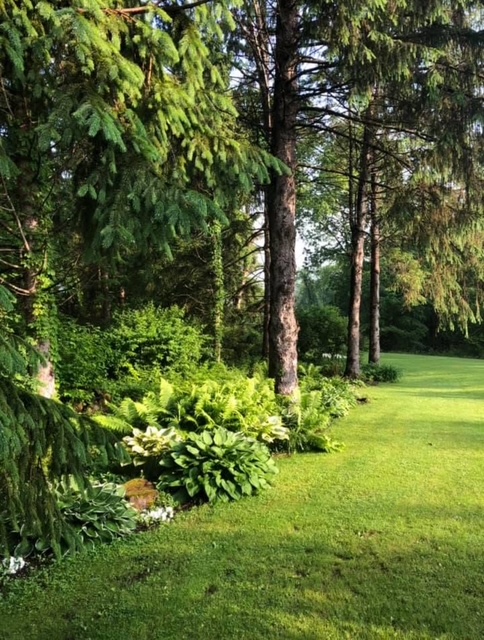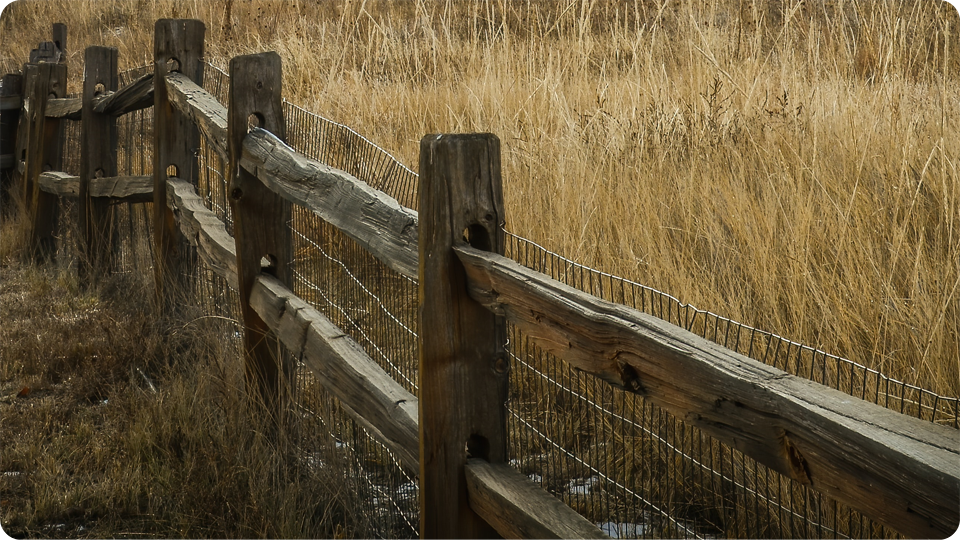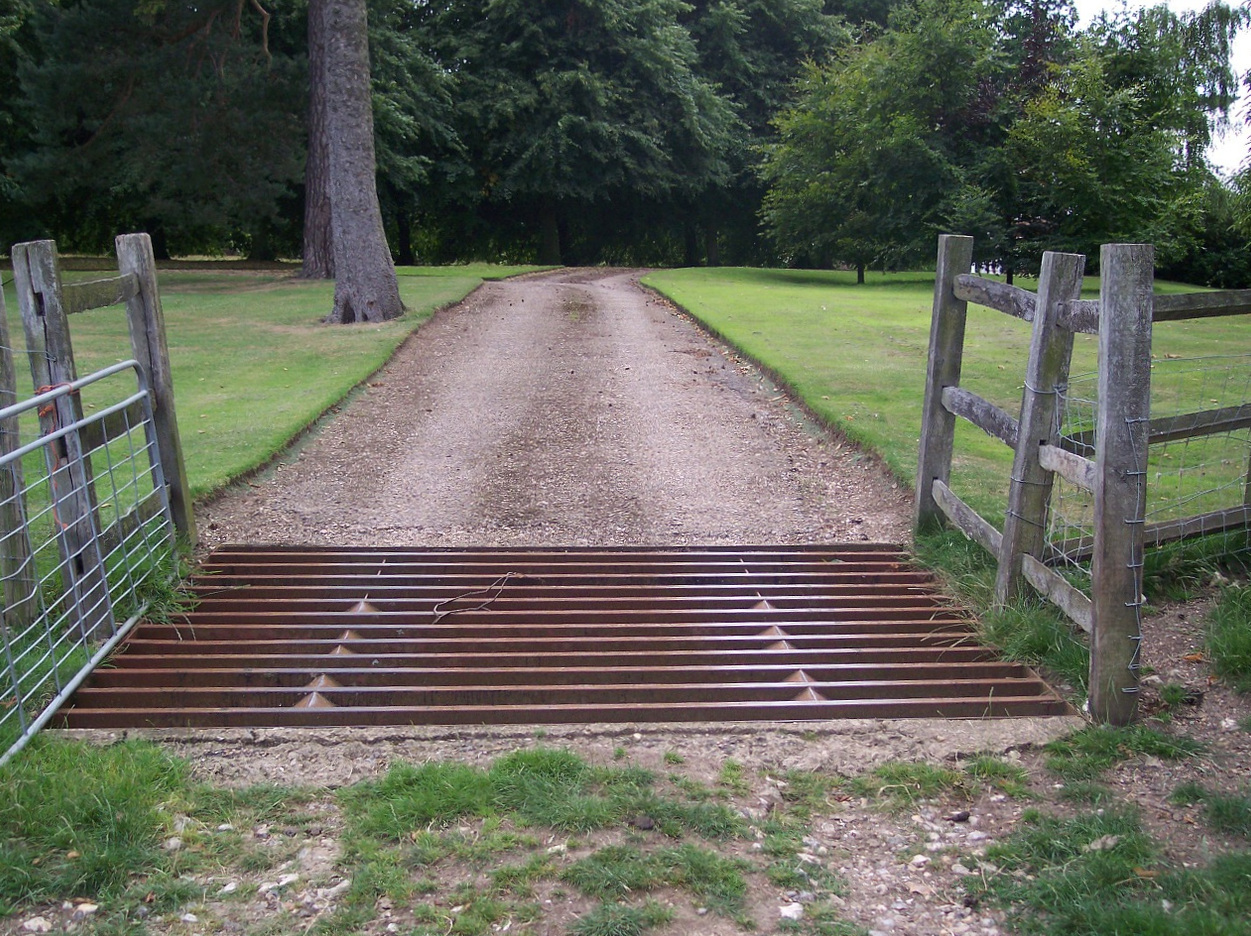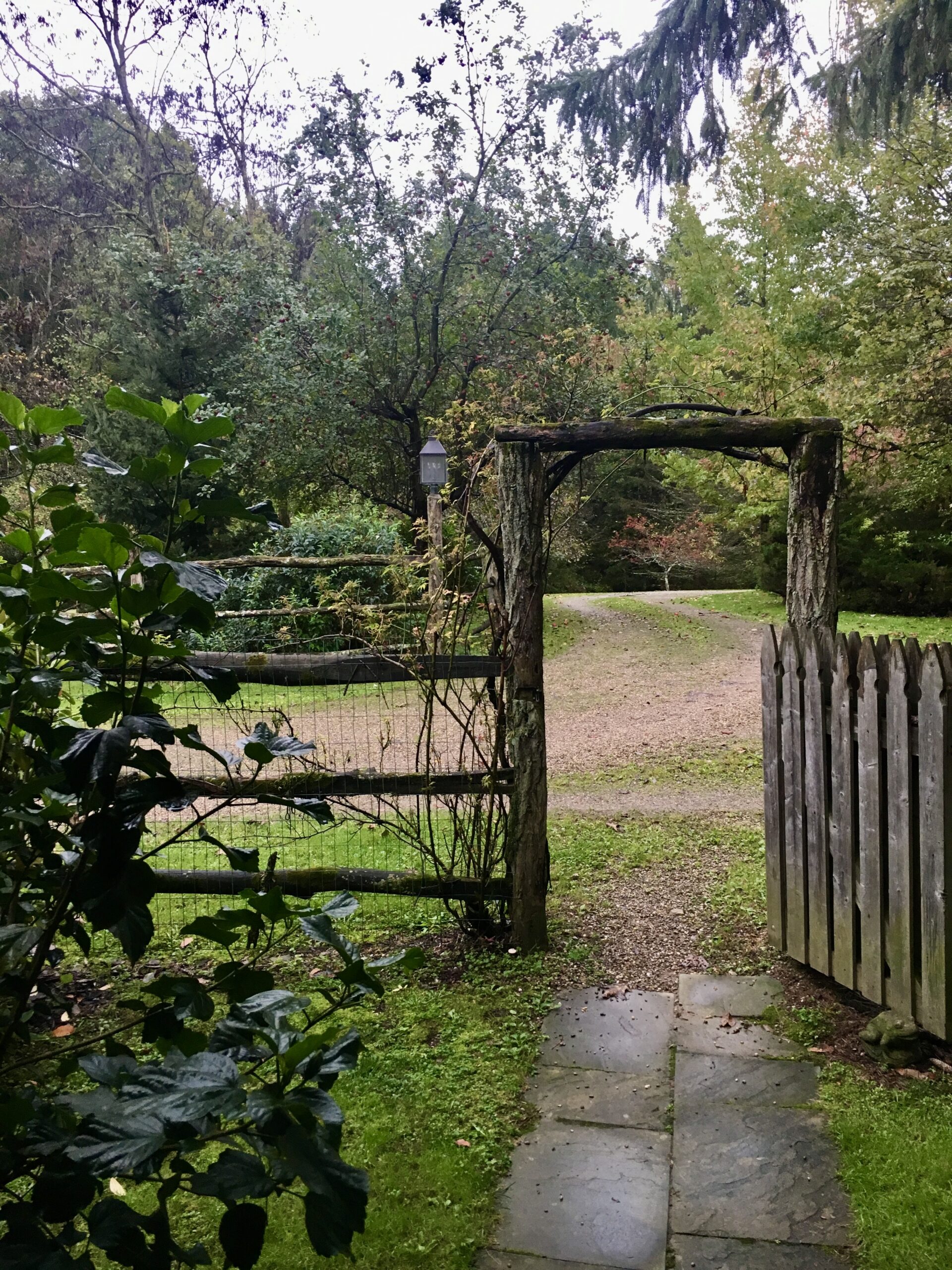No Neighbors? Fences Still Matter
Ahhh…not another house for miles! You’re all alone! Not so fast. You still may need fencing to keep out unwanted visitors. Not the two-legged kind, rather the sweet, wild four-legged kind. If you have landscaping you care about, research fencing options for your property early. Because hungry critters will eat you out of house and garden if you don’t plan properly. Or plant properly. Or honestly, both.

Go Native!
First, let me share the tragedy of my garden’s demise so that you can learn from my mistakes (RIP. See above). There is no combination of plants I love more than those suited for an upland shade garden. And there is no star more central to that show than the hosta. And when I tell you I spent a small fortune trying to keep deer away from my hostas, believe me. Every weekend I swept the aisles of our local Agway searching for new solutions. Here’s what I learned: they’re not big fans of stinky stuff, however neither am I. Liquid Fence makes a granular version of a well-known repellant that I found highly effective. The trick is that it must be applied liberally and every few weeks (although less frequently–I found–than the liquid version of the same in our rainy climate). My shade garden however, was quite large and this ultimately became unsustainable for me. So, feast they did–generation after generation, those deer returned. It was perhaps a blessing to my (in)sanity when the entire shade garden was completely destroyed several years ago during a freak and devastating wind storm. In tackling the re-landscaping, I’ve gone strictly native–with not a single beloved hosta in sight. Gone are the days of serving up free meals and I’ve never seen deer feasting on my planting again.
Before I wax poetic about the benefits of planting natives species, from our experience there are few plants that are truly deer-proof. If you have a terrible winter and food sources become dangerously scarce, they’ll even eat holly bushes. Still it is strongly advisable to research deer and rabbit resistant plants, trees, shrubs, and flowers–regardless of your fencing plans–and rely on them heavily. But know this: I have seen deer devour plants everyone swore they’d never so much as sniff. And I can attest that as cute as they are? Rabbits have little regard for decency when it comes to respecting the list of flowers they’re supposed to find unappealing.

Design Fences Before Planting the Landscape
There are different fencing options to protect you from critters, but the best will be flush to (if not buried an inch or so into) the ground and be high enough to discourage a deer from jumping over top. And just as you can’t underestimate a deer’s appetite for destruction, don’t underestimate their athletic ability. They can jump high–like, Olympic pole vaulter high. So a fence of up to 8 feet is necessary in open spaces such as a field. Closer to the house, to protect foundation planting or gardens, you may be able to get away with 6-7 feet. Galvanized metal mesh fencing is the least expensive option and it is typically affixed to the ground with equally tall metal stakes. It’s pretty unattractive stuff. But if you’ve landscaped with largely deer-proof plants, you may only need to use it during the winter months. It is a beast of a job working with this stuff and you’ll need some help to manage the annual fall project of unrolling the fencing, tamping the posts into the ground, securing the fencing to the posts (I recommend zip-ties), and then in the spring, removing and storing it again until next winter.
If you can afford it? Consider a more permanent option where feasible. At our front entrance, we installed post and rail fencing to which we attached slightly shorter metal deer fencing directly to the posts. We leave it there year-round and have had no problems. And although you can see the metal? The post and rail attracts more attention and creates a “trompe l’oeil” effect.

If Feasible? Go Big!
Tall, privacy-style wood fencing panels are another option since deer are less likely to jump something visually imposing. It’s not my favorite choice for too close to your upland home because, why live in the country if you can’t enjoy the fabulous vistas from your couch? You could use it to fence in the perimeter of the property, but depending on your acreage, that may require a considerable initial investment and will prove an ongoing maintenance headache. If money is no object? Why not consider enclosing the entirety of the property with metal deer fencing? You can hide it in the woods. Or attach it to post and rail if it will be in an open space. If you take this approach, you’ll need to either gate your driveway entrance or sink a 12’-16’ cattle guard across the width of the drive. Farm Ranch Store sells these. I’ve seen this done quite effectively at a friend’s home and her gardens are an absolute showpiece. If you take this approach, you’ll need to regularly monitor the fence line for necessary repairs. I strongly recommend ensuring the line be kept clear of shrubs and trees and easily accessible by truck or ATV for this reason.

Don’t Forget the Trees
Finally, not only gardens and shrubs are vulnerable to deer. So too are young or small trees. In addition to browsing on saplings, deer will use trees to mark their territory by rubbing their antlers against the bark. This can strip the tree’s cambium layer which is important for moving nutrients through the plant. Once stripped on all sides, the tree likely won’t survive. Short young trees must be entirely fence-protected every spring to prevent browsing of young, green growth. Once the green is out of reach–or later in summer–you may remove fencing and use tree-tubes to protect the trunks. You can purchase mesh or translucent polyethylene cylinders. Or do as many locals likely do and cut lengths of flexible corrugated drainage tubes. Either way, once the tree is mature and spring green is out of reach and/or the trunk is wide enough they’re unable to wrap antlers around the radius? You’ll likely be in the clear. Note: Fabric-type tree wrap is also available and a less unsightly option than a length of corrugated tubing. You will however need to replace it every 3 months or so to avoid problems with moisture. For this reason, I personally don’t recommend it.
